- News
- Reviews
- Bikes
- Accessories
- Accessories - misc
- Computer mounts
- Bags
- Bar ends
- Bike bags & cases
- Bottle cages
- Bottles
- Cameras
- Car racks
- Child seats
- Computers
- Glasses
- GPS units
- Helmets
- Lights - front
- Lights - rear
- Lights - sets
- Locks
- Mirrors
- Mudguards
- Racks
- Pumps & CO2 inflators
- Puncture kits
- Reflectives
- Smart watches
- Stands and racks
- Trailers
- Clothing
- Components
- Bar tape & grips
- Bottom brackets
- Brake & gear cables
- Brake & STI levers
- Brake pads & spares
- Brakes
- Cassettes & freewheels
- Chains
- Chainsets & chainrings
- Derailleurs - front
- Derailleurs - rear
- Forks
- Gear levers & shifters
- Groupsets
- Handlebars & extensions
- Headsets
- Hubs
- Inner tubes
- Pedals
- Quick releases & skewers
- Saddles
- Seatposts
- Stems
- Wheels
- Tyres
- Health, fitness and nutrition
- Tools and workshop
- Miscellaneous
- Cross country mountain bikes
- Tubeless valves
- Buyers Guides
- Features
- Forum
- Recommends
- Podcast
review
£269.90
VERDICT:
Comfortable, reasonably light and beautiful – the classic Flite reimagined for the 2020s – but it comes at a cost
Good amount of stiffness, and rails absorb a decent amount of road buzz
Comfortable for short to medium rides
Available in three different widths
Very high quality
Great looks
A little firm for some, and not ideal for long rides
Stiffness means not much flex for comfort
Expensive
Not as light as you might expect for the price
Weight:
182g
Contact:
At road.cc every product is thoroughly tested for as long as it takes to get a proper insight into how well it works. Our reviewers are experienced cyclists that we trust to be objective. While we strive to ensure that opinions expressed are backed up by facts, reviews are by their nature an informed opinion, not a definitive verdict. We don't intentionally try to break anything (except locks) but we do try to look for weak points in any design. The overall score is not just an average of the other scores: it reflects both a product's function and value – with value determined by how a product compares with items of similar spec, quality, and price.
What the road.cc scores meanGood scores are more common than bad, because fortunately good products are more common than bad.
- Exceptional
- Excellent
- Very Good
- Good
- Quite good
- Average
- Not so good
- Poor
- Bad
- Appalling
The Selle Italia Flite Boost Kit Carbonio is a short saddle that's perfect for fast rides. It offers a decent level of comfort that's better suited to shorter outings, and is reasonably light at 182g, if not weight-weenie level, so you might consider looking elsewhere if that's important to you. As you might expect from an expert Italian saddle manufacturer, it's a very high quality saddle that would look stunning on your Sunday best.
The Selle Italia Flite is a classic racing saddle that is still on sale today despite being released back in 1990. Bicycle technology has moved on a fair bit since then, and to celebrate the Flite's 30th anniversary, Selle Italia has given the classic design a modern makeover.
The result is the Flite Boost – a big evolution over any iteration of the Flite that's come before it. Its stubby profile is thoroughly on-trend, and it's one of the most beautiful saddles I've come across in some time, with a timeless design (much like the 90s original).
It's now shorter than before at just 248mm in length, which is about somewhere in the middle of the longest and shortest 'short' saddles out there. For reference, the standard Flite saddle is 275mm long.
Depending on your needs, and your wallet, there are various configurations to choose from. The standard Boost, on test, has a shallow channel to help relieve pressure, while the Superflow version has a full-on cutout which should, in theory, give you greater relief on longer journeys (unless you hate this style of saddle, and many do).
Both versions are available with manganese, titanium or, as our test saddle has, carbon rails. As you might expect, the saddle gets more expensive the lighter you go. The Superflow version is lighter than the standard Flite Boost because of its cutout, which makes sense.
The saddles are also available in two different widths: small (135mm) and large (145mm).
The Flite Boost is geared more towards the racy end of the spectrum. Selle Italia says it's ideal for medium rides (5/5), less so for long distance 'granfondos' (3/5) and cycle touring (2/5), and not suitable for endurance rides (0/5). I'd say it's definitely not a saddle suited to a great deal of miles.
As a short saddle, it's designed to lock you into one position and keep you there. That might seem a strange proposition if you're used to being able to move around a bit; I tend to fidget a lot when I ride, but once I'd got over the initial weirdness I found that being effectively told where to sit soon became a very good thing. Of course, this is a personal thing and you might dislike not being able to move about, especially on longer rides.
The shorter nose also means you're able to get in a tucked position more easily than on a standard saddle, and with greater comfort, as well as there being less saddle for your legs to interfere with.
The padding isn't too thin (unlike the classic Flite), but it is quite firm. The Carbo Keramic (carbon fibre with a ceramic coating) rails are also quite stiff, with little flex when you push down on the saddle by hand with a good amount of force.
In theory, you would expect this to be a stiff and unforgiving saddle, but that's not the case. Granted, it does feel a little firm from the moment you sit on it, but you get used to it, and at no point did I feel any discomfort build during any of my test rides. The carbon rails do a good job of absorbing buzz from the road, and their stiffness means you're not going to be bobbing about when you're pedalling hard.
Even with a relatively modest cutout, there's no numbness either. The Superflow version, with its cutout channel, is meant to be better suited to riders wanting to get lower down in the drops. Although I found no discomfort with the standard version, which is designed for those with a lower pelvic rotation, according to the idmatch fit system on Selle Italia's site I should be on a Superflow, which offers better pressure relief for those with a higher pelvic rotation. The standard Flite Boost might be a better choice if your riding position is racy but a little less extreme on the spectrum of tilt.
The flat design of the saddle does mean you feel as if you're perched on top of the saddle rather than nestled in it, as you do with other types.
The microfibre covering over the beautiful T-shaped base is quite grippy and seems durable.
Value and conclusion
There's no getting away from the elephant in the room here, and that's the price. Sure, there are a few saddles nowadays at this level, but I can't help feeling the kudos of the Flite brand is what's pushing the price up. Yes, it's a bit exotic, especially with the cachet of the Italian brand, and it certainly is a good looking, high quality product, but it's not particularly light when you compare it to the competition.
> Buyer’s Guide: 18 of the best high-performance lightweight saddles
Although not quite as attractive, in my opinion, Selle Italia's other short Boost saddle, the SP-01 Boost Kit Carbonio Superflow, is £30 cheaper and weighs 12g less. Matt raved about its comfort thanks to the 'suspension link movement' too.
The short Repente Latus M saddle also fared quite well when it was reviewed this year, being not only loads lighter than the Flite Boost Kit Carbonio at 145g, but also £50 cheaper and comfortable too (if the shape suits you).
Then again, it looks like a bargain compared with the £440 Selle Italia Boost Tekno Superflow...
Verdict
Comfortable, reasonably light and beautiful – the classic Flite reimagined for the 2020s – but it comes at a cost
road.cc test report
Make and model: Selle Italia Flite Boost Kit Carbonio saddle
Size tested: L 145x248 mm
Tell us what the product is for and who it's aimed at. What do the manufacturers say about it? How does that compare to your own feelings about it?
Selle Italia says, "A new Flite logo, to relive the history and successes of a legendary product. A saddle that has supported and still supports champions such as Mathieu Van Der Poel, Caleb Ewan, Philippe Gilbert and many others. The Flite Boost resumes the classic 'Flat' shape that has always distinguished the FLITE family to guarantee, together with a more compact shape (248mm of length), the usual performance and maximum stability while pedaling."
Tell us some more about the technical aspects of the product?
Size tested: L1
180 g
RAIL
Carbon/Keramic Ø7x9 mm
DIMENSIONS
S 135x248 mm
L 145x248 mm
CATEGORY
performance
Rate the product for quality of construction:
10/10
Exceptionally high quality, a work of art.
Rate the product for performance:
9/10
Firm but comfortable, and while the carbon rails absorb road buzz, they are stiff to keep you in place.
Rate the product for durability:
8/10
Fibra-tek cover feels very durable and after many miles still looks like new, although it is a bit of a grease magnet.
Rate the product for weight (if applicable)
8/10
It's light, for sure, if not as light as you might expect for a £270 saddle with carbon rails.
Rate the product for comfort (if applicable)
9/10
Check your fit first using Selle Italia's idmatch system. The standard Flite Boost is better suited to a slightly more upright position, but I found it comfortable on the perineum even with a high level of pelvic rotation.
Rate the product for value:
4/10
Despite the very high all-round performance of the saddle, this is one heck of an expensive saddle.
Tell us how the product performed overall when used for its designed purpose
Comfortable no matter what position you're in, and being locked in place is great if you're a bit fidgety in the bum department like me. The carbon rails are stiff but do seem to absorb any road vibration.
Tell us what you particularly liked about the product
A beautiful saddle that performs as well as it looks.
Tell us what you particularly disliked about the product
Just the price tag.
How does the price compare to that of similar products in the market, including ones recently tested on road.cc?
Super-expensive, and there's no obvious reason why when you compare it to other similar products out there. The Flite branding carries a lot of kudos, but even the standard longer Flite saddle with carbon rails is £90 less – you're paying more for what is effectively less saddle overall. Compared to other short saddles on the market, it's one of the priciest you can buy.
If you can't stretch to the carbon rail version of the Flite Boost, the entry-level option with manganese rails is £105 and weighs a respectable 243g. Selle Italia's other similar short saddle, the SP-01 Boost Kit Carbonio Superflow, gives you more performance, on paper, for less money, so if you want to save weight this might be a better option, if it fits your rear.
Did you enjoy using the product? Yes
Would you consider buying the product? No – I couldn't afford to!
Would you recommend the product to a friend? Yes
Use this box to explain your overall score
If you've bought or built yourself a superbike and want to add a comfortable and racy saddle to finish it off with, this is a lovely one to grace your steed with. The price tag is a little out there, and it's not the lightest, but it's still very good.
About the tester
Age: 39
I usually ride: Steel audax bike My best bike is:
I've been riding for: 10-20 years I ride: Every day I would class myself as: Experienced
I regularly do the following types of riding: commuting, touring, club rides, sportives,
Latest Comments
- eburtthebike 9 min 53 sec ago
Sorry, but the BBC is definitely tilting towards cycling after the Panorama debacle....
- mdavidford 15 min 35 sec ago
Unlikely. Not once he hears that it'll 'help Gore'.
- bikeman01 28 min 17 sec ago
Indeed I did. I can only assume the Mr Onion allowed himself to be interviewed and dropped himself in it by not accepting the caution. A caution...
- Hirsute 38 min 41 sec ago
Remember your hiplock D1000 is only as good as the street furniture it is attached to.
- Hirsute 41 min 56 sec ago
I feel this person's problems may be a little more deep seated than not wanting to pay ulez (although their car is exempt).
- chrisonabike 38 min 54 sec ago
Now very old news, but it still just doesn't take....
- Destroyer666 52 min 26 sec ago
I am not sold on this - As mentioned, Sram has ok'd e.g. Pedro's chain checker which is more like a traditional tool. And those you can fit and get...
- chrisonabike 43 min 54 sec ago
Not my battle * (especially on a thread that is about something else) - but ... I hear there is a tribe who ride distances on fixies. And...
- chrisonabike 2 hours 18 min ago
Kei vehicles here. Europe already has microcars of course (in fact there's at least one place in the US where they have quite a few really micro...
- wtjs 4 hours 16 min ago
Let's hope that it makes other drivers think twice before attacking cyclists...






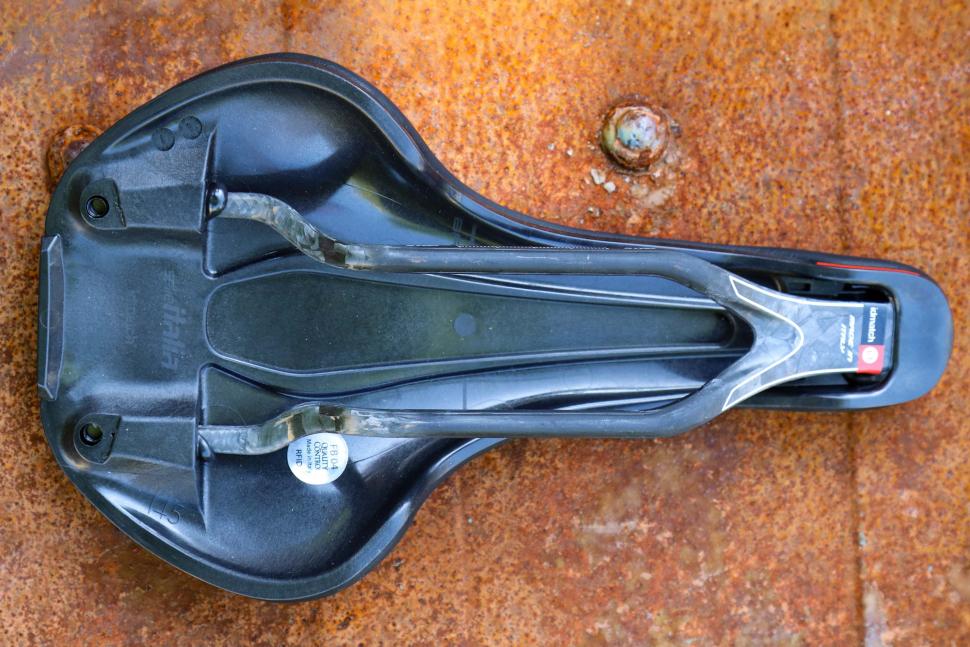


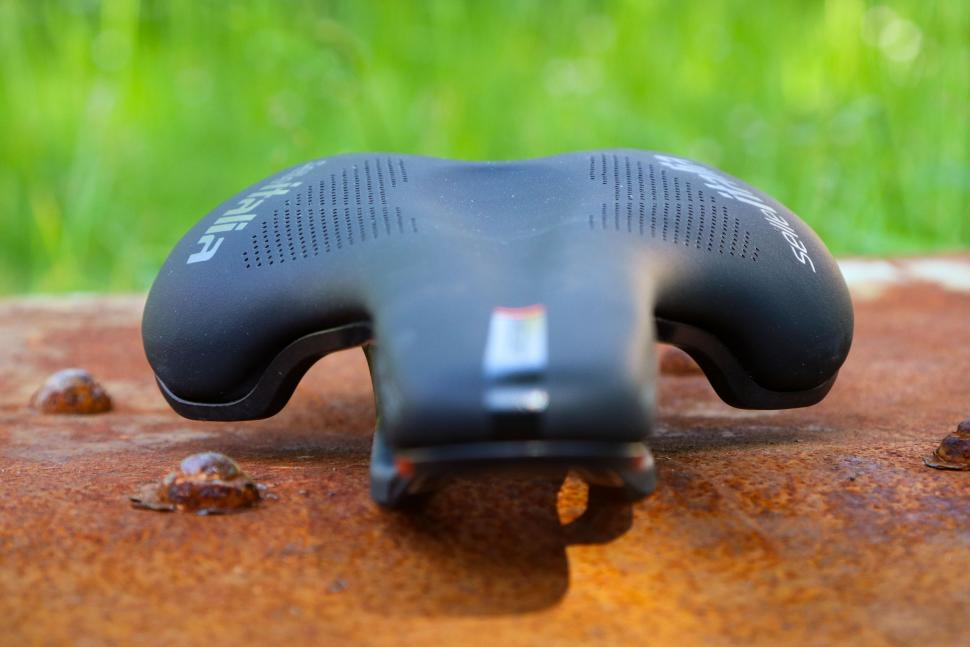
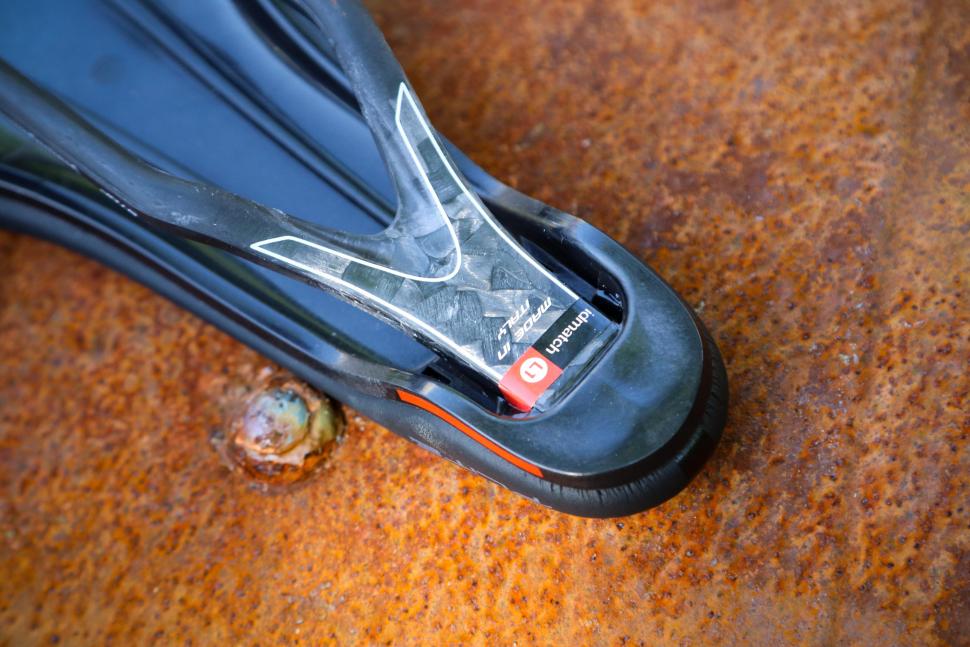
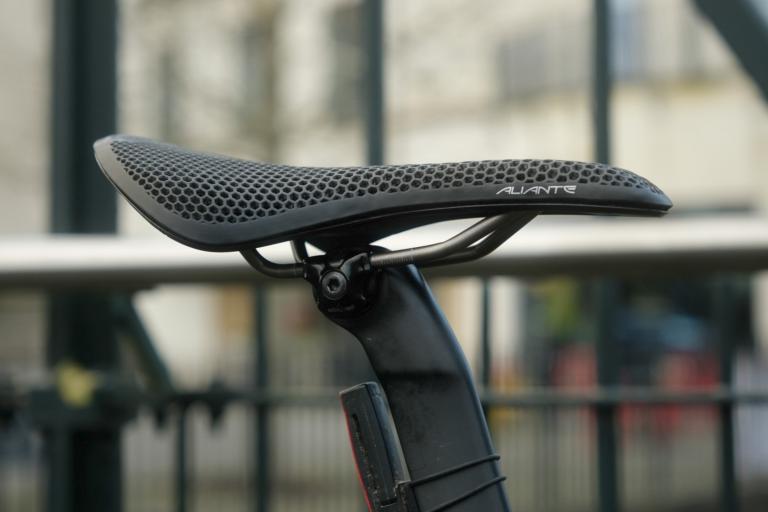

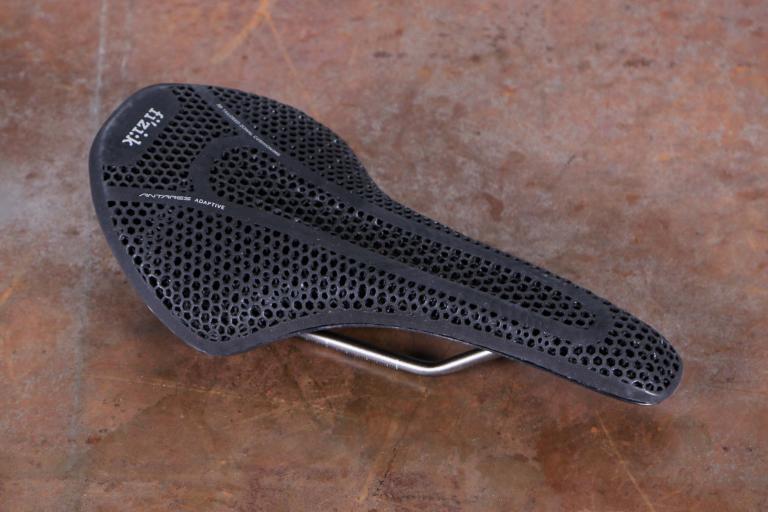

Add new comment
4 comments
Amazing what companies charge for a bit of carbon fibre, foam and synthetic material. Its now not abnormal for the base model made from plastic with steel rails to cost $150. It's absurd. I was pleasantly surprised when I purchased the basic Aeolus saddle for about $90. Ditto Fabric, where the base models are $60-$70.
Anyway, rant over.
Agreed, this is a premium brand saddle, and for the brand you pay a premium of £240 over a generic carbon saddle.
Can you compare to other stub nose saddles like the Bontrager Aeolus or Specialized Power?
I'm trying an Aeolus at the moment and love the stub nose design in general, but I think the Aeolus might be a bit wide for me.
I previously got on very well with the Flite shape so would love a combination of the Aeolus and the Flite, hoping the Flite Boost TM Superflow might be a good choice...
The underside has threaded inserts, looks a bit like Specialized's or Pro's mounting system - have they mentioned any plans for accessories, Hollis?